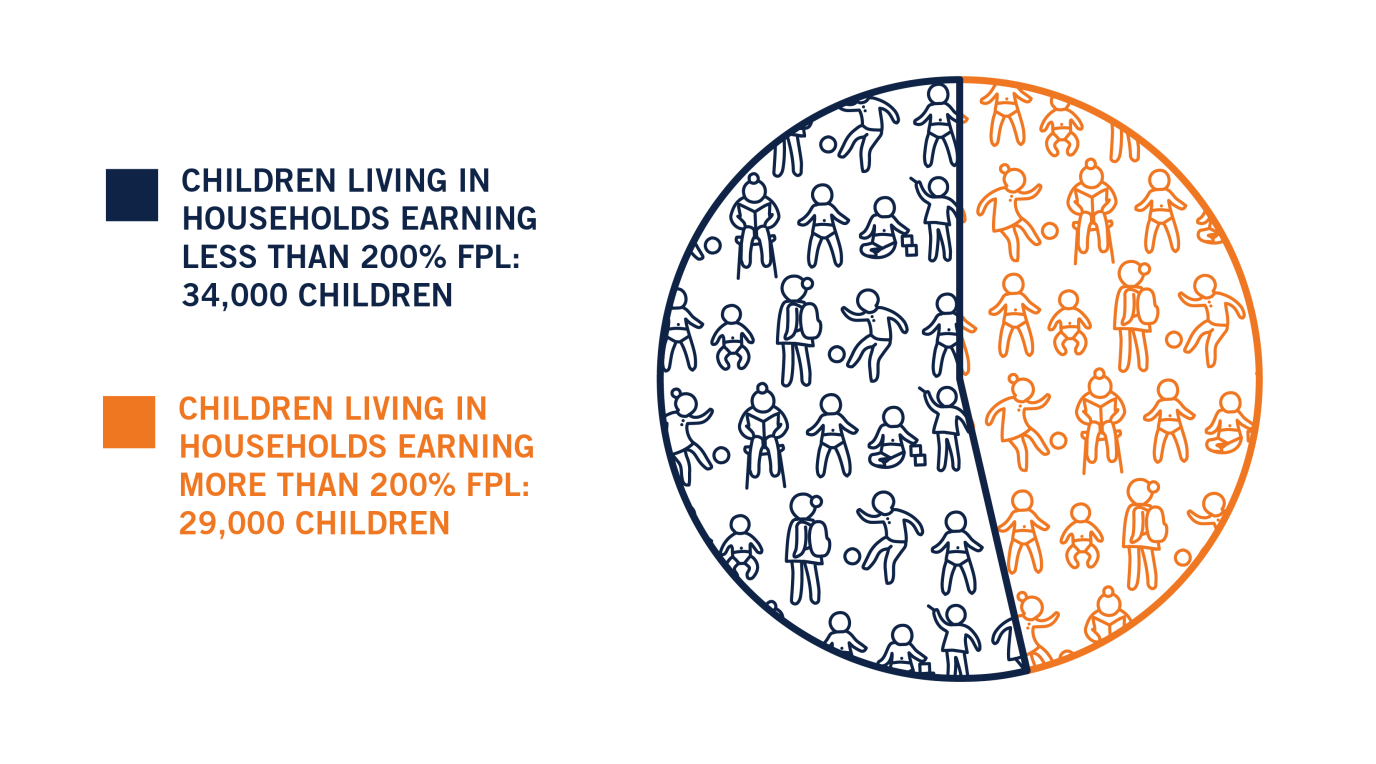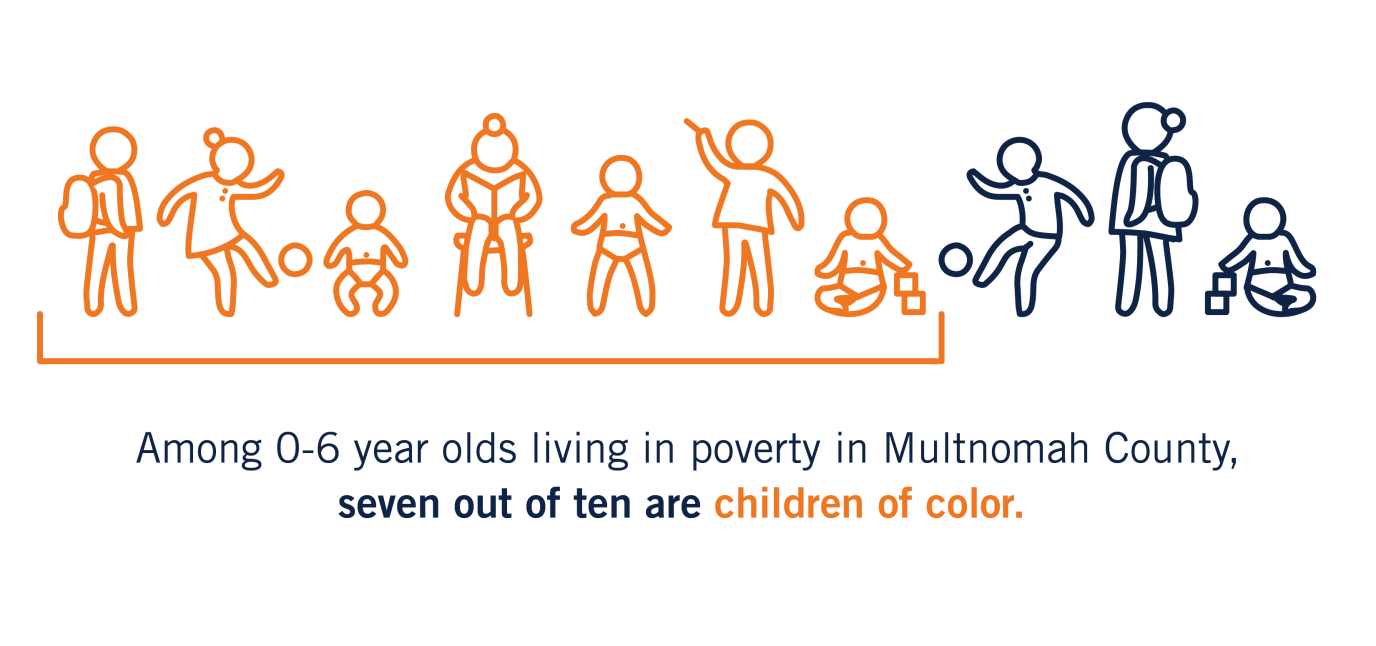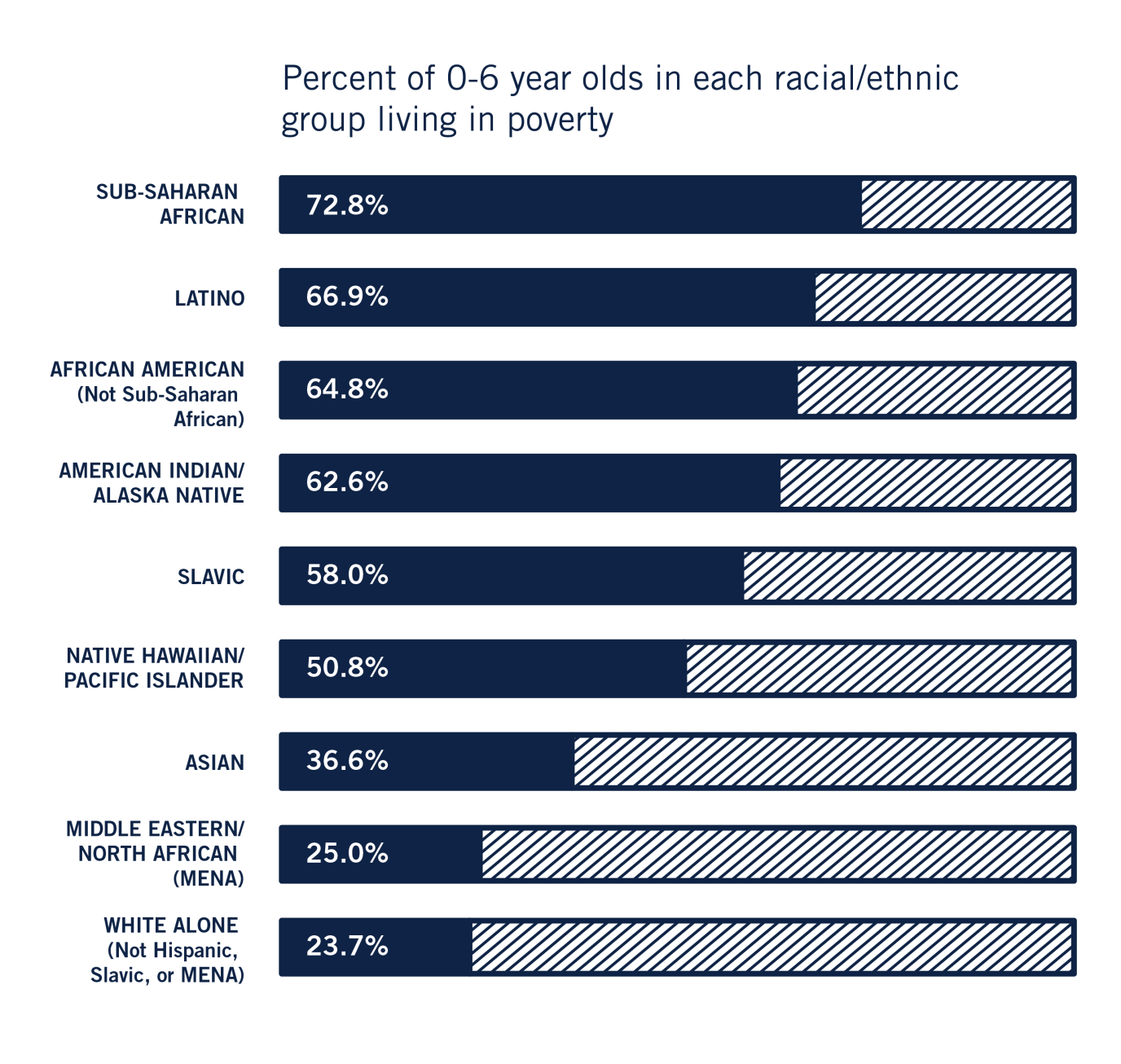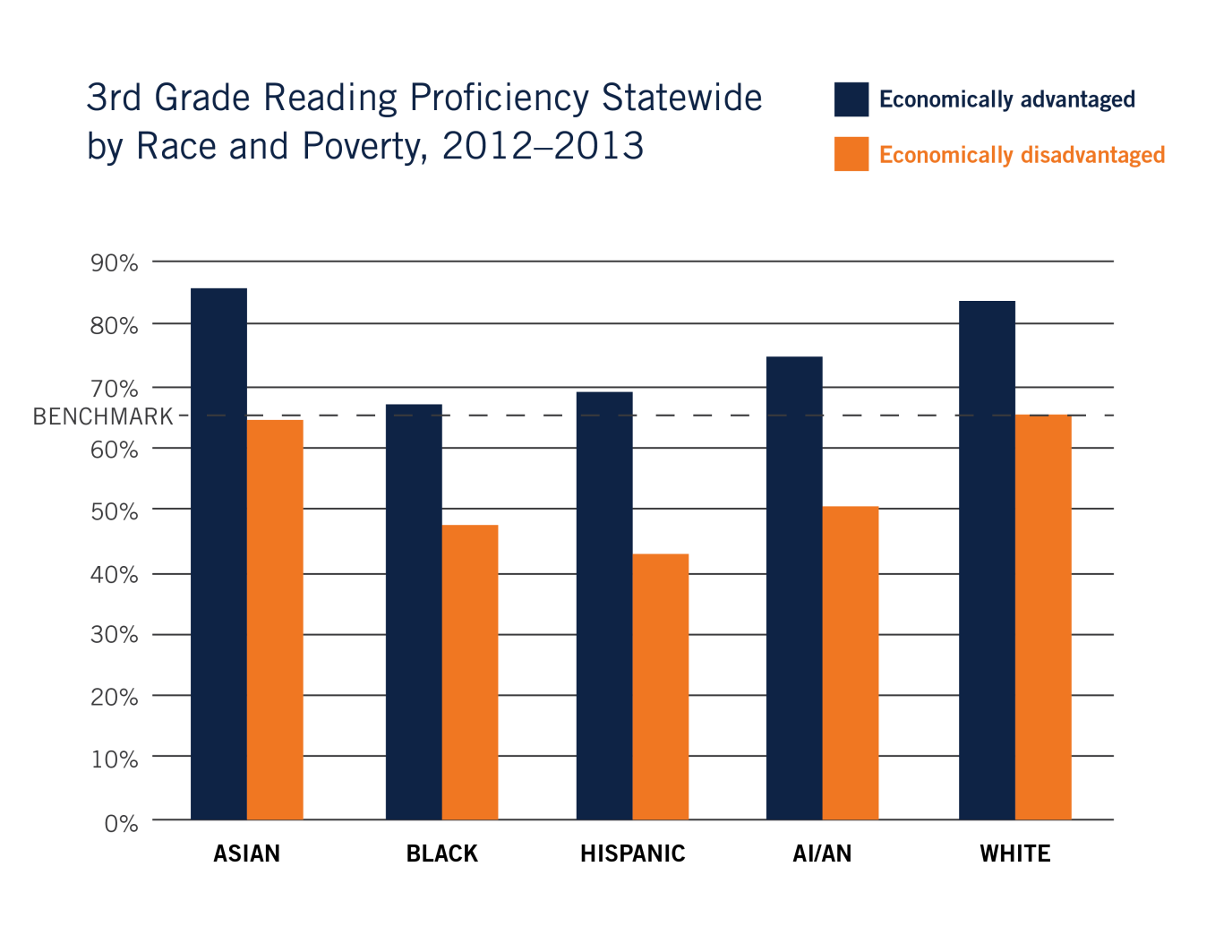When Early Learning Multnomah (ELM) got started three years ago, one of our first jobs was to zero in on a priority population. Where could we have the most impact? Which children and families were the most underserved in our county? Who should ELM serve, and why?
In partnership with Multnomah County, we set out to determine the answer. The data and perspectives we gathered conveyed a strong message: that children and families of color should be our highest priority. In short, that’s why equity is at the center of everything we do.
But how did we get here? We realize not everyone knows the story behind the data. That’s why we’ve decided to share part of our data journey with you here, to help you better understand what ELM does, why we do it—and, hopefully, spark a shift in your thinking and actions, too.
* * *
Our story starts in Multnomah County, Oregon’s most populated county and home to almost 800,000 people. For a little perspective, our population makes up about 20% of all Oregonians.
In our county, there are about 63,000 children age six and under. These are our county’s youngest children—babies, toddlers, preschoolers and kindergarteners—all full of amazing potential.
More than half of the children age six and under in our county (about 34,000) are living in households that earn 200% of the federal poverty level. That means most families with young children living here have an annual income of less than $50,000 a year (for a family of four).
And when you look at the total population of children six and under in our county, children of color represent a little less than half of all kids in the age range. So, logic tells you that they would likely represent a little less than half of all children living in poverty. But that’s not the case. When you look only at children living in poverty, children of color make up more than two-thirds of that group.
To look at it another way, seven out of ten kids living in poverty are children of color.
This is troubling because we know poverty can affect all kinds of things in the early years of life—from nutrition, to health, and school readiness. And if children don’t get a strong start they are less likely to succeed in school and life.
So, why not just cast a wide net and focus ELM’s efforts on improving early life experiences for ALL children in poverty?
Let’s unpack that more and look at poverty rates within racial/ethnic groups. In the chart below, you’ll see that children from six racial/ethnic subgroups are more likely to live in poverty than not: Sub-Saharan African, Latino, African American, American Indian/Alaska Native, and Slavic. At the same time, you’ll see that White and Middle Eastern/North African children have poverty rates under 25%.
The graph above shows us even more clearly that poverty affects children of color disproportionately.
And, even more concerning, this disparity is showing up in children’s school readiness and academic performance. For an example, we can look at third grade reading scores.
The next graph shows the percentage of children that met the third-grade reading benchmark in 2012-2013. You can see that, when we control for income, there are still differences between the percentages of students meeting benchmark, and those differences are closely tied to race and ethnicity. In other words, race and ethnicity are more powerful predictors of school success than income level.
Of course, the graph above could also be used to support the false assumption that children of color are inferior somehow—that their parents don’t value education or read enough to their children, that they need to get it together and catch up. But we don’t believe in the inferiority of children of color or, in turn, the superiority of white children. We believe it is up the adults in this world to create an early learning and K-12 system that makes it possible for every child to be successful.
Together, these data show us that the system is not working for children and families of color, immigrants or refugees. And the majority of our early learning system components and our anti-poverty programs were not designed to address the needs of communities of color.
That’s especially troubling when we know there will be more and more families of color enriching our communities for years to come.
* * *
We are sharing these numbers because we think they serve as valuable context for any organization working with or for children and families in Multnomah County, not just ELM. This is just part of the abundant evidence that shows we have racialized poverty in our county—that policies, practices and underlying beliefs operating in our society create disproportionate levels of poverty for communities of color.
It’s time to ask ourselves an important question: what can each of our organizations do about racialized poverty? How are we adapting to the changing demographics? How are we making sure that our services are accessible, culturally relevant, and unbiased? How can we change, grow, and adapt to better serve families of color?
At ELM, our first step was to acknowledge that racism is at the root of what keeps our system the way it is—working for some and not for others. Taking a hard look at the data helped focus us.
We started with the core belief that every child can be successful. We committed to stay vigilant and uproot the myth of white superiority from our thoughts and actions. We created ways to share power with families from communities of color through our governance structure because changing patterns of power disrupts racism. We committed resources to stay focused on family-driven priorities. We looked for others to work with us to dismantle racism. And we are committed to create ways for people from a range of beliefs and experiences to learn and work together.
We do all this so we can build an early learning system that is free from bias and gives every child what they need to learn and grow.
What does ELM's equity work look like? Here are just a few examples:
- We prioritize investments that build capacity in communities of color.
- We fund Community Education Workers and home visitors from communities of color.
- We fund staff from communities of color to lead family engagement in eight elementary schools.
- We partner with health and housing to create culturally responsive tools and services.
- We advocate for culturally relevant training for preschool teachers.
- We raise equity as a central issue in every meeting and convening.
- We invest time and resources to deepen our understanding of equity and inclusion and we have an accountability plan in place so that our practice changes as a result of what we learn.
What does equity mean to you and your organization? Does the information in this article change how you think about your priority population? How will it change the way you act and work in the community?
We challenge you to take a closer look to uncover the hidden biases in your policies and practices. Then, take the next step to transform those policies and practices that perpetuate disparities into ones that promote equity and inclusion.
As you take this work on, come join us at an Early Learning Community Meeting, give us a call, or send an email. We have a lot to learn and we know we can’t do it alone. We are energized by this work. Let’s do it together.
If we all work together, we can make an equitable early learning system a reality.





